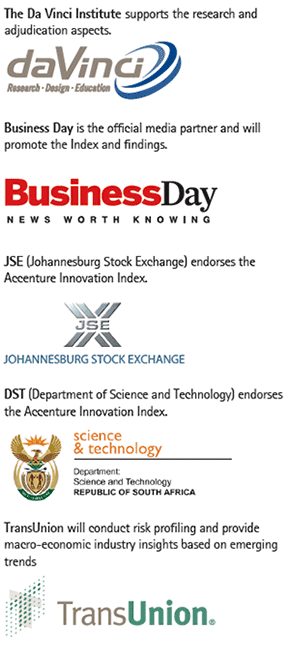INNOVATION can be a company’s most powerful tool and a key driver of value. Yet many executives, fearful of the risks inherent in pursuing edgy new ideas that may not succeed, hesitate to unleash its full potential. They prefer, indeed, to renovate rather than to innovate.
For example, 64% of the 519 companies in Accenture’s 2012 innovation survey — a cross-industry sample of US, UK and French players — are still focusing largely on line extensions. Only 20% view their innovation efforts as potential game changers. And just 18% say they are using innovation to drive competitive advantage.
Some, of course, would argue that responsible risk management necessitates a cautious approach to innovation. Only startups, they say, can afford to court the risk of failure. Global companies are complex entities, held together by a web of controls. Loosening those controls to give innovation teams free rein could incur unacceptable risks and costs, not only for the company but for its various stakeholders as well.
That’s why so many big companies opt to reduce uncertainty by leveraging a traditional, stage-gate innovation process.
Stage gates are designed to identify the best ideas by putting them through multiple reviews, or gates. In principle, there’s absolutely nothing wrong with the concept — quite the contrary. Stage gates provide a discipline and a structure for identifying problems early in a project’s life, and allow the project’s sponsors to keep constant track of the evolving business case.
The problem, however, is the evaluation criteria typically used at each gate. Few decision makers want to take responsibility for a failed experiment, so extreme caution usually prevails when new ideas are assessed. Opportunities tend to be defined narrowly.
Moreover, the tools commonly used to support the process exacerbate the problem. Based on retrospective analytics — Net Present Value (NPV) models, for instance, are built on market projections that are calculated using past trends — they tend to skew innovation decisions toward optimising existing product lines rather than pursuing new ones.
As a result, promising ideas are often smothered. And while many of the innovation initiatives that do gain approval are low risk, they offer only low returns — incremental improvements that usually do little more than maintain market share.
The right model
For most companies, the big, breakthrough innovations that deliver new benefits to customers and thus create new markets — the sort of innovation exhibited by Dell when it pioneered the direct distribution model for PCs, or by Apple with its iconic iPad — remain elusive indeed.
So what do the innovation masters do differently?
Recent Accenture research shows that highly innovative companies are essentially no more likely to embrace risk than their less innovative peers (see Sidebar 1).
But when we investigated further, we found that they approach the management of innovation risk differently — and that their business models are critical factors in their success.
Consider, for example, the business model employed by the venture capital industry, which finances most startups. These players know that most early-stage experiments will founder — but they also know that the fruits of just one or two such experiments could earn back the investment of their entire portfolio (and then some).
So venture capitalists take an active approach to managing the risks of their investment portfolios, systematically measuring those risks to generate returns. They engage dynamically with their portfolio companies. Rather than killing a project that’s running into difficulties, they try alternative solutions. But they also move swiftly and decisively to close failures, while doubling down on ideas with promise — and encouraging ongoing experimentation.
Big companies are obviously different. Larger, slower and subject to the constraints inherent in managing their core businesses successfully, they can’t act exactly like startup investors. But they can afford to modify their stage-gate processes to drive more effective innovation. And they do have much to learn from the venture capital industry’s bold yet disciplined approach to innovation risk management — an approach that has created such groundbreakers as Amazon.com and Facebook.
Leading players recognise that far from stymieing innovation, sophisticated, state-of-the-art risk management tools, techniques and models, including small-scale experimentation and portfolio management, can actually help encourage it. They know that by fusing such a risk management approach with innovation, they can create a powerful, value-driving partnership.
They focus their innovation risk management efforts on three key business areas.
Governance
A corporate culture that only celebrates success can discourage innovation by making people nervous about taking risks — yet no rational organisation would reward failure. Or would they?
Some companies have recognised that they can allow innovation teams to make strategically intelligent mistakes within a clearly understood governance framework. This, in turn, enables a culture that not only tolerates risk but also embraces failure as an integral part of the innovation process.
For instance, a large advertising agency awards a quarterly Heroic Failure trophy to recognise clever, unproven ideas that may not work out in practice but nevertheless demonstrate creative risk taking. And an online payroll provider offers $400 to the winner of its Best New Mistake award, which goes to an employee who made a mistake but learned from it — and, in doing so, helped other employees avoid similar mistakes. The idea behind both awards is to support creativity by encouraging openness about errors and rewarding those who genuinely learn from their failures.
Some companies also provide physical spaces — game, nap or meditation rooms — or specific time slots during which employees can feel free to be creative. The advertising agency, for example, blocks off a "no meeting zone" every Thursday morning.
Big companies, by contrast, tend to fence off the innovation process by setting up separate innovation units that operate, in effect, like venture capital funds. Cases in point: the $2bn Novartis Venture Funds, a wholly owned subsidiary of the healthcare products company that reports to a dedicated advisory board comprised of mostly external members; and Intel Capital, a $2.1bn fund that reports directly to the tech giant’s CEO. While these arrangements have had clear successes, they may be leaving some upside on the table.
The risks of such arrangements are well managed, thanks in part to their governance. But we believe that companies could drive even greater benefits by incorporating the management of innovation risk into the organisation as a whole.
That would help fuel innovation from the bottom up, while ensuring that everyone in the company understands what’s being funded, how, when and why. It could also bridge the gap (common in big organisations) between a risk-averse finance unit and those operating units — whether marketing, operations or product development — on the innovation front line.
Indeed, risk management groups could work as standard setters, providing a common language the business could use to translate strategic challenges into specific, measurable risks, and providing such risk governance expertise as oversight committees and assessment procedures.
Portfolio
Just as a venture capitalist invests in a broad portfolio of companies before knowing which of these investments will actually pan out, a company can build a portfolio of early innovation experiments that act, in effect, like options.
Missouri-based Monsanto, for example, has been building a portfolio of biotechnology investments since the 1980s. As a result, biotech now anchors its highly successful seed business (see Sidebar 2).
Corning, meanwhile, launched a similar strategy even earlier — back in 1959 — by investing in a technology for safer vehicle windshields. The New York-based glassmaker’s groundbreaking invention was priced out of the auto market a decade or so later. But essentially the same technology is used to manufacture LCD panels — which gave Corning a competitive advantage when LCD subsequently became the dominant display technology in most consumer devices.
Such companies don’t make their innovation investment decisions by looking backward. But neither do they throw caution to the winds. Instead, they use risk management methodologies and tools to measure uncertainty — both positive and negative — and to provide realistic estimates of outcomes that can facilitate decision making.
By continually assessing value against multiple variables and scenarios, predictive analytics can help guide these complex decisions. Risk scenario (or simulation) analysis, for example, is a structured, forward-looking process designed, unlike traditional SWOT analysis (a structured planning method used to evaluate strengths, weaknesses, opportunities and threats), to discover how multiple factors combine to create both vulnerability and opportunity.
Take, for instance, the large, global software company that used a structured simulation to improve planning for unanticipated and overlapping responses among its partners and customers to a product launch. The analysis helped identify potential gaps in the company’s ability to respond, and gave it greater insight into the roles, responsibilities, decision-making criteria and interactions of different stakeholders.
Process
With product lifecycles across industries shortening, successful innovation often hinges on speed. And that, in turn, requires a risk management process that can shorten learning cycles, recognise failures early and make timely course corrections — a process that facilitates a companywide dialogue around which risks are acceptable and how much risk is appropriate, based on potential returns.
At Corning, for example, the company’s R&D, engineering, manufacturing and commercial expertise are all harnessed in support of the innovation process, from earliest ideation right through to commercialisation. What’s more, senior management participates throughout, facilitating swift decision making and significantly reducing the time it takes to launch projects.
With risks well managed, companies can then use rapid experimentation and the techniques of agile development — an iterative process closely linked to customers and markets — to boost their chances of coming up with a truly profitable innovation portfolio.
That’s what California-based Salesforce.com did when management decided to jettison the traditional stage-gate innovation process in favour of agile development. In fact, since the enterprise software maven began working iteratively with the market through frequent testing, its innovation prowess has started to return to the high-octane levels of the company’s early years (see Sidebar 3).
_____________________________________
Most companies today have come to recognise that sophisticated risk management is a key enabler of long-term growth and profitability. What’s more, some companies have put in place advanced capabilities to manage their innovation risks successfully.
Few, however, have developed the agile, iterative approach that can drive breakthrough innovation rather than drowning it — or have created the risk-tolerant, organisation-wide governance structures that allow such capabilities to flourish. But growing numbers realise that with such systems in place, they could be confident that their innovation risks were transparent and well managed. And they, too, could start creating dynamic portfolios of innovative ideas and experiments — and commit the funds to bring the best of them to market.
• Adi Alon is a Boston-based managing director in Accenture’s Innovation Performance group.
• Wouter Koetzier leads Accenture’s Innovation & Product Development group. He is based in Amsterdam.
• Steve Culp leads Accenture’s Risk Management group. He is based in London.






















Change: -1.59%
Change: -1.79%
Change: -1.88%
Change: -1.70%
Change: -1.62%
Data supplied by Profile Data
Change: -0.64%
Change: 0.12%
Change: -1.60%
Change: 0.00%
Change: 0.10%
Data supplied by Profile Data
Change: 0.73%
Change: -0.04%
Change: 0.78%
Change: 1.40%
Change: 1.28%
Data supplied by Profile Data
Change: 0.69%
Change: 0.82%
Change: 0.00%
Change: 0.50%
Change: 0.05%
Data supplied by Profile Data